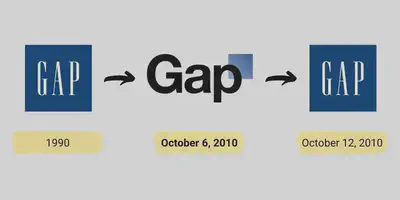1. Perception
Table of Contents
1. Key Definitions
| Concepts / Theories | Definitions |
|---|---|
| Mere exposure effect | People tend to develop a preference for things merely because they are familiar with them. (aka familiarity principle) |
| The perception process | The process by which stimuli are selected, organized and interpreted |
| Cross-modal perception | Perception that involves interactions between two or more different senses |
| Exposure | An initial stage of perception during which some sensations come within range of consumers’ sensory receptors |
| Absolute threshold | The minimum amount of stimulation that can be detected on a given sensory channel |
| Perceptual vigilance | The tendency for consumers to be more aware of stimuli that relate to their current needs |
| Contrast | Stimuli that differs from others around them |
| Schemas | Organized collections of beliefs about objects, ideas, people or situations |
| Positioning strategy | An organization’s use of elements in the marketing mix to influence the consumer’s interpretation of a product’s meaning |
| Perceptual maps | Technique that marketers use to visually display the perceptions of customers |
2. Perception
What is perception?
Our ability to comprehend and understand information that is presented to us.
- Perceptions are hard to change
- Perception Inertia: Tend to value the status-quo
- Hard to create positive perceptions for really new products
Roadmap
- Why study perception?
- How do we form perceptions?
- Exercises
3. Why study perception?
-
Helps in understanding what influences consumers' buying decisions
-
Helps in understanding how a customer feels about a company or product.
- If customers perceive your business as having strong values that align with their own, they’re far more likely to purchase from you
4. How do we form perceptions?

Stages of perception
1. Exposure
-
Absolute threshold: We have selective stimuli, hence to be noticed, a stimulus has to be beyond the abdolute threshold.
- Stimulus: A thing or event that evokes a specific functional reaction in an organ or tissue.; (plural : stimuli)
-
Intrinsic vs. Extinsic cues
-
Intrinsic cues are attributes, such as ingredients, that cannot be manipulated without also altering physical properties of the product
-
Extrinsic cues are product-related attributes-such as price, brand name, and packaging-which are not part of the physical product.
-
-
Cross-modal perception: How the senses interact
Case study #1: Understanding change in logos
-
Gap

Image from https://www.thebrandingjournal.com/2021/04/learnings-gap-logo-redesign-fail/ - one online blog had generated 2,000 negative comments
- “Make your own Gap logo” site went viral, collating almost 14,000 parody logo redesigns
-
Starbucks
-
More rounded logos were favored by people from interdependent, collectivist cultures, including many countries in Asia, while angular logos were more popular in individualistic cultures, such as the U.S.
-
Reference: Wharton Article (2011), “Logo Overhaul: Will Customers Still Answer the Siren Call of Starbucks?"
-
-
Burger King
- Refreshed look emulating an old logo used from 1969 to 1999
Case study #2: Tropicana packaging change
Actions:
- $35 Million spent on new advertising and packaging.
Results:
- 20% sales decline in 2 months
- double digit increase for competitors
2. Attention
Perceptual selection: consumers select only a small portion of the stimuli.
Perceptual vigilance: we are more likely to be aware of stimuli that relate to our current needs.
Perceptual defense: if a stimulus threatens us in some way, we may not process it.
3. Interpretation
Perception relies on existing schemas and scripts.Case study #3: Tropicana in India
- Had to be modified for the Indian market
- Taste did not correspond to the schema of “orange juice”
- Schemas: organized collections of beliefs and feelings that a person has about objects, ideas, people, of situations
- Schema associated with “juice” or “natural food”
5. Exercises
5.1. Exercise 1
- Group exercise
5.2. Exercise 2
Perceptions and positioning
Marketers spend a lot of time trying to create positive perceptions for their product
- One approach is competition-based positioning: establishing a point of difference within a category
Perceptual Map

What is it??
A chart used by market researchers and businesses to depict and understand how target customers view and feel about a given brand or product.
Why would you use a perceptual maps?
- Gain insight into new market trends
- Identifying gaps
- Identify positioning preferences